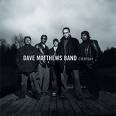Tuesday, April 27, 2010
Random Post #1
Friday, April 23, 2010
Talking Points #10
taken for granted"
- This quote comes from the problem posing section in Shor's piece. He's saying that empowering knowledge comes from a problem posing style of education in which the students and teacher work together in a form of critical questioning and thinking examining society and everyday actions through regular curriculum material.
Thoughts: Overall, I thought this piece was the most difficult to read and follow of any of them. Because of its length, I split the reading up into a couple different sessions, which probably made me understand the big picture a little less. A few points really came across to me, though. Like from my first quote, I saw the lack of participation in society and government from ordinary people in society, and saying that it comes from the lack of critical inquiry and participation in school is directly related really made me see how that could be true. Mainly, though, I think Shor called for a sort of school environment that was more a so called problem posing one rather than a banking one in which students and teachers worked more together, rather than teachers feeding students information machine-like. All in all, I agreed with what I could understand with the article and will take some of the ideas into my own classroom someday.
- The link on Ira Shor is a video, but I couldn't post it as one for some reason.
